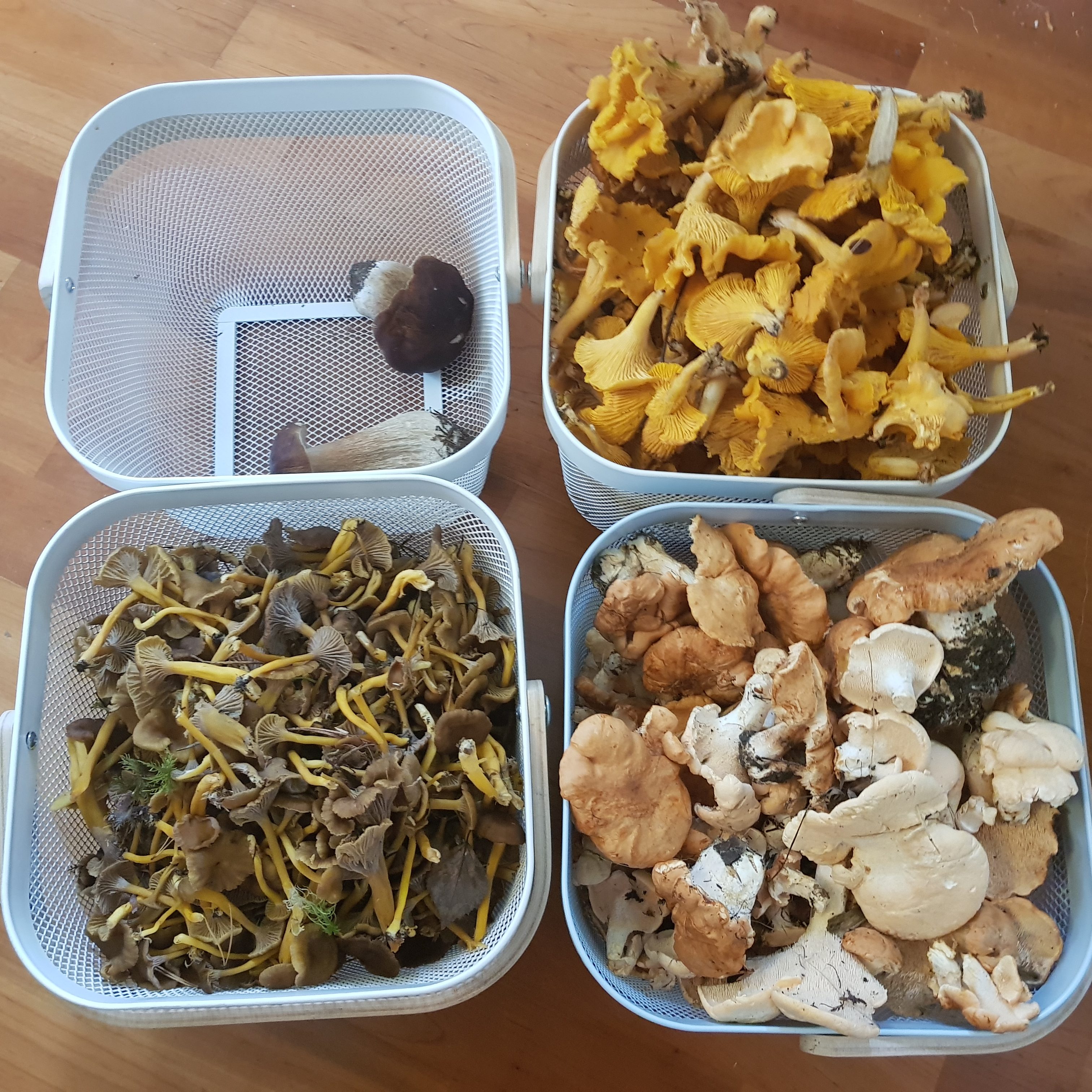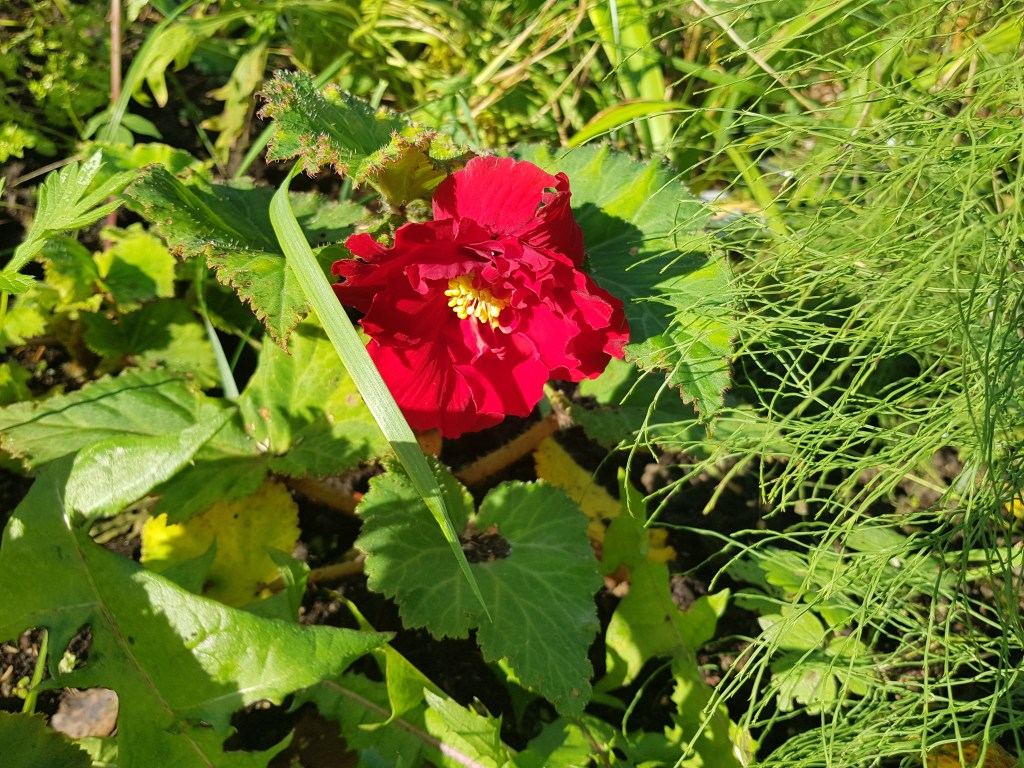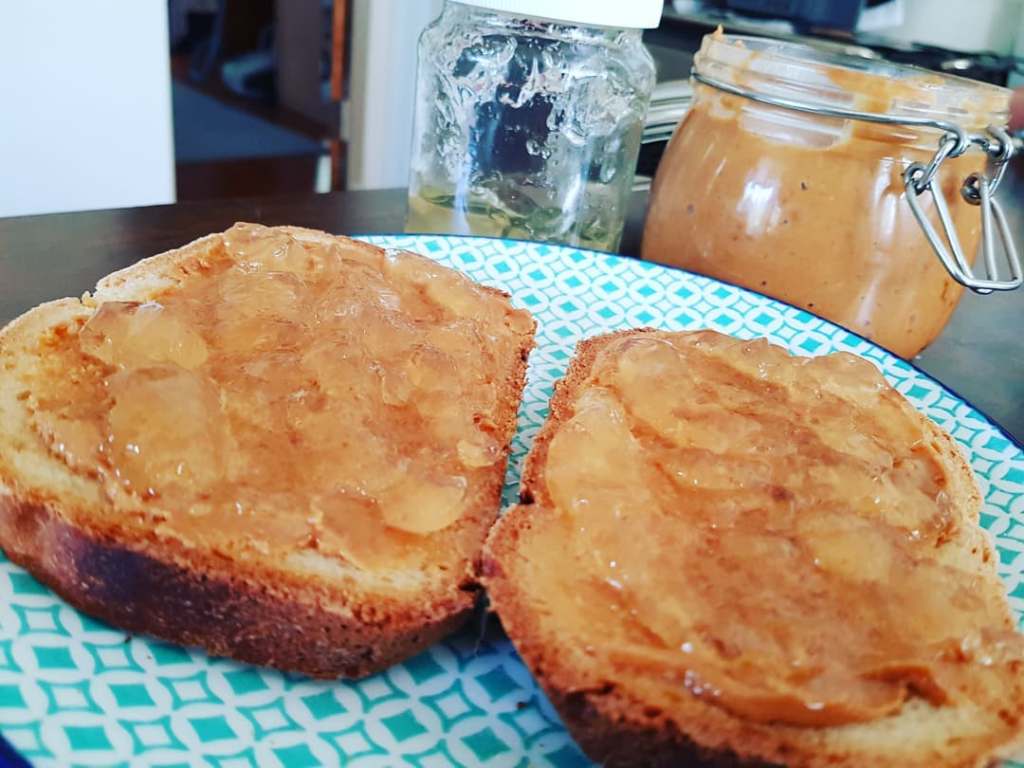It’s been a gentle September, a couple of chilly nights aside. With the mellow temperatures and increased rainfall has come an amazing mushroom foraging season. The late autumn mushrooms are appearing earlier and the late summer mushrooms are still out in droves, so that I can’t walk from the house to the garage without coming across an edible mushroom. After only wandering within a 500-meter radius of the house for a couple of hours, I had 4 full baskets totaling 6.26kg of mushrooms. Guess who is spending the weekend preserving all that?
1. The golden chanterelle (Cantharellus cibarius) is plentiful in Finnish woodlands and easy to spot once you know what you’re looking for. This year, they have gone completely nuts. Clumps are growing on the neighbor’s lawn. I took out the garbage and came back with a handful of chanterelles. Luckily, they are also our favorite and can be used in countless different ways. Mushroom pasta and risotto are especially popular in our household.
2. Funnel chanterelles (Craterellus tubaeformis) have been growing very large this year, many as big as the yellows. They can pretty much be substituted for each other in just about any recipe. The funnels usually don’t start sprouting until next month, but I’m not complaining.
3. Another chanterelle relative, the hedgehog mushroom is also plentiful in our woods. The one in the picture is the more common Hydnum repandum but we also have a clump of Hydnum rufescens growing under our clothes drying rack. These first three are all pretty much interchangeable in recipes and have very similar flavors, though I like the firm texture of the hydnums the best.

4. A group picture of all the different species sorted into their own baskets. Also included so I can show the two porcinis (Boletus edulis) I found next to the swing set in the top left basket.

5. These are not the yellow and red ‘Jackpot’ gladiolus I expected when planting these bulbs, but I prefer whatever it is I ended up with. They fit in better with the color scheme of the rest of my plants, honestly. Don’t tell that to my son, though — he chose the bulbs because he likes orange.


6. The double red begonias finally decided to show themselves, right when I’d given them up as a lost cause. I admit that they are pretty, though perhaps they might just stay on the terrace in a pot next year.

Thanks for visiting and please do check out what the other SoSers are doing over at Jim’s page!










